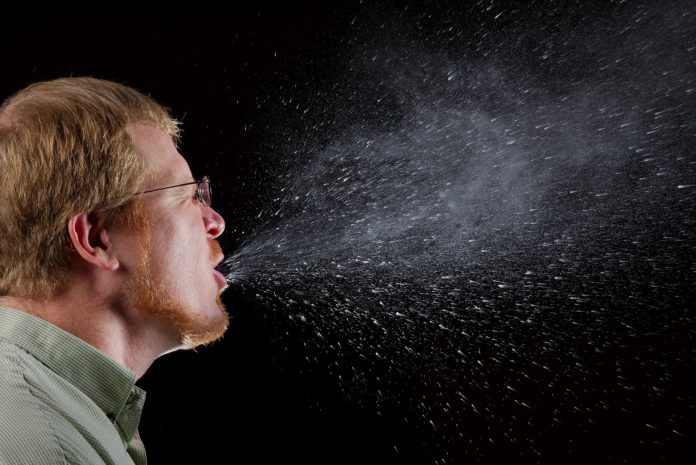High-speed photography shows a sneeze can blast saliva and mucus well beyond current social distancing guidelines, and tiny droplets can remain in the air longer than thought.
FOR ANYONE WHO grows anxious at the sound of a sneeze or a cough these days, Lydia Bourouiba’s research offers little comfort.
Bourouiba, a fluid dynamics scientist at MIT, has spent the last few years using high-speed cameras and light to reveal how expulsions from the human body can spread pathogens, such as the novel coronavirus. Slowed to 2,000 frames per second, video and images from her lab show that a fine mist of mucus and saliva can burst from a person’s mouth at nearly a hundred miles an hour and travel as far as 27 feet. When the sternutation is over, a turbulent cloud of droplet-containing gas can remain suspended for several minutes, depending on the size of the droplet.
Understanding exactly how these clouds travel and disperse is critical to containing infectious respiratory diseases such as COVID-19. Many knowledge gaps remain over how it spreads. Bourouiba’s research highlights an ongoing scientific debate about how the new coronavirus moves through the air, suggesting such airborne transfer may be more likely than previously thought…
To read the entire article from National Geographic, click https://www.nationalgeographic.com/science/2020/04/coronavirus-covid-sneeze-fluid-dynamics-in-photos/


